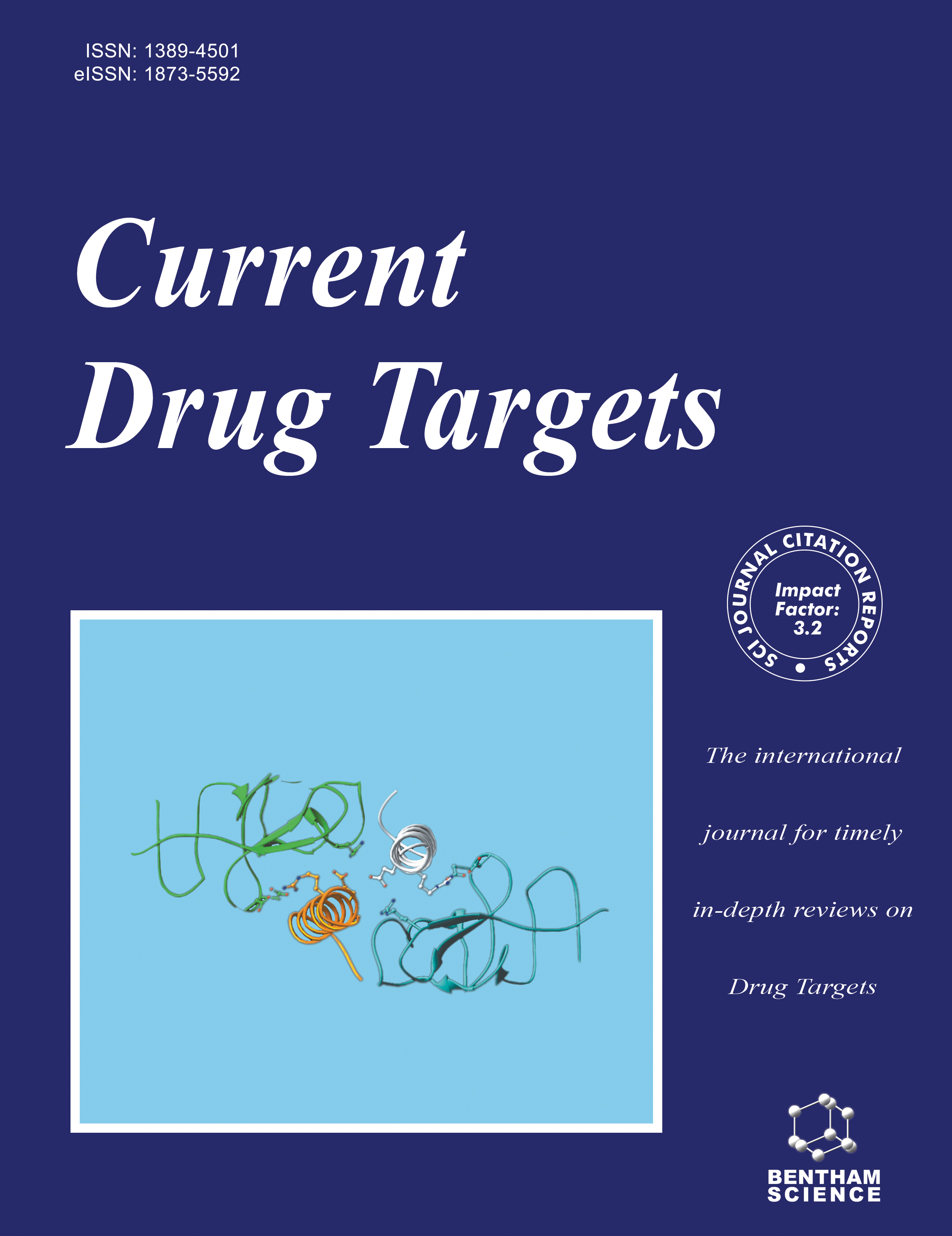Current Drug Targets - Volume 25, Issue 5, 2024
Volume 25, Issue 5, 2024
-
-
Use of Total Parenteral Nutrition (TPN) as a Vehicle for Drug Delivery
More LessTotal Parenteral Nutrition (TPN) is a method of providing nutrients directly into the bloodstream for individuals who are unable to meet their nutritional needs through the normal digestive process or gastrointestinal system. It provides macronutrients and micronutrients in a single container, reducing handling and contamination risks and making it more cost-effective. TPN has the potential to be used as a drug delivery system, with applications in combination therapies, personalized medicine, and integrating advanced technologies. It can enhance drug dosage precision and provide nutritional assistance, potentially reducing hospitalization and improving patient outcomes. However, implementing new applications requires thorough testing and regulatory approval. TPN could be particularly useful in pediatric and geriatric care and could also contribute to global health by combating malnutrition in areas with limited medical resources. Healthcare professionals prepare a sterile solution tailored to each patient's nutritional needs, and administration involves a central venous catheter. However, the simultaneous administration of medications with PN admixtures can result in pharmacological incompatibility, which can impact the stability of the oil-in-water system. The European Society for Clinical Nutrition and Metabolism and the American Society for Parenteral and Enteral Nutrition recommendations advise against including non-nutrient drugs in PN admixtures due to safety concerns. This review focuses on the utilization of Total Parenteral Nutrition (TPN) as a method for delivering drugs. It discusses the benefits and difficulties associated with its commercial application and offers suggestions for future research endeavors.
-
-
-
Deciphering Neuroprotective Effect of Rosmarinus officinalis L. (syn. Salvia rosmarinus Spenn.) through Preclinical and Clinical Studies
More LessAuthors: Ibukun O. Oresanya and Ilkay E. OrhanRosmarinus officinalis L. (RO, rosemary) is a well-known medicinal, aromatic, and culinary herb with traditional use in European folk medicine against memory deficits and neurodegenerative disorders. This review highlights the different neuroprotective activities of RO investigated in both preclinical and clinical studies, as well as in silico molecular docking of bioactive compounds found in RO. The neuroprotective effect of RO was searched through databases including PubMed, Web of Science (WoS), Scopus, and Clinical Trials using the keywords “Rosmarinus officinalis, rosemary, neuroprotective effect, memory, cognitive dysfunction, Alzheimer's disease.” RO, which is rich in secondary metabolites that have memory-enhancing potential, has displayed neuroprotection through different molecular mechanisms such as inhibition of cholinesterase, modulation of dopaminergic and oxytocinergic systems, mediation of oxidative and inflammatory proteins, involved in neuropathic pain, among others. RO extracts exhibited antidepressant and anxiolytic activities. Also, the plant has shown efficacy in scopolamine-, lipopolysaccharide-, AlCl3-, and H2O2-induced amnesia as well as amyloid-beta- and ibotenic acid-induced neurotoxicity and chronic constriction injury-related oxidative stress memory and cognitive impairments in animal models. A few clinical studies available supported the neuroprotective effects of RO and its constituents. However, more clinical studies are needed to confirm results from preclinical studies further and should include not only placebo-controlled studies but also studies including positive controls using approved drugs. Many studies underlined that constituents of RO may have the potential for developing drug candidates against Alzheimer’s disease that possess high bioavailability, low toxicity, and enhanced penetration to CNS, as revealed from the experimental and molecular docking analysis.
-
-
-
An Overview of Contemporary and Future Therapeutic Strategies for Scalp Psoriasis
More LessAuthors: Bindu Soni, Riya Shivgotra, Karan Trehan, Aashveen Chhina, Muskaan Saini, Subheet K. Jain and Shubham ThakurScalp psoriasis is a common manifestation of psoriasis that significantly impacts a patient's quality of life. About 80% of cases of psoriasis involve the scalp, making it the most frequently affected area of the body. The treatment of scalp psoriasis is particularly crucial because of its hard-to-treat nature and substantial adverse impacts on overall well-being. Along with the physical symptoms of discomfort and itching, psoriasis, especially when it affects the scalp, can cause severe psychological damage. Treating scalp psoriasis can be challenging due to its location and associated symptoms, such as scaling and pruritus, which is why various drugs have become widely used for refractory cases. Topical treatments like corticosteroids and vitamin D analogs manage scalp psoriasis by reducing inflammation and regulating skin cell growth. Tar-based shampoos, salicylic acid solutions, and moisturizers control scaling. Phototherapy with UVB light reduces inflammation. Severe cases may require systemic medications such as oral retinoids and immunosuppressants. While various therapies are accessible for scalp psoriasis, concerns arise due to their limited advantages and the absence of controlled studies assessing their effectiveness. Considering these challenges, there is a clear demand for innovative approaches to address this condition effectively. Recent advancements in topical therapies, phototherapy, systemic agents, and complementary therapies have shown promising results in managing scalp psoriasis. Also, the advent of biologics, specifically anti-IL-17 and anti-IL-23 drugs for scalp psoriasis, has seen significant improvements. The review highlights the lack of well-tolerated and effective treatments for scalp psoriasis and underscores the importance of further research in this area. The objective of this review is to clarify the different treatment options currently available or being investigated in clinical trials for managing scalp psoriasis.
-
Volumes & issues
-
Volume 26 (2025)
-
Volume 25 (2024)
-
Volume 24 (2023)
-
Volume 23 (2022)
-
Volume 22 (2021)
-
Volume 21 (2020)
-
Volume 20 (2019)
-
Volume 19 (2018)
-
Volume 18 (2017)
-
Volume 17 (2016)
-
Volume 16 (2015)
-
Volume 15 (2014)
-
Volume 14 (2013)
-
Volume 13 (2012)
-
Volume 12 (2011)
-
Volume 11 (2010)
-
Volume 10 (2009)
-
Volume 9 (2008)
-
Volume 8 (2007)
-
Volume 7 (2006)
-
Volume 6 (2005)
-
Volume 5 (2004)
-
Volume 4 (2003)
-
Volume 3 (2002)
-
Volume 2 (2001)
-
Volume 1 (2000)
Most Read This Month


